Headlines and events archive
Displaying 301 - 350 of 362
You may also find an archive of news published in the media which are related with the Instituto de Astrofísica de Andalucía - CSIC.
Pages
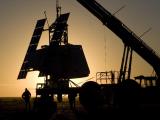
|
02/07/2014
IMaX, a Spanish instrument, reveals how magnetic structures in the Sun are born and evolve IMaX, aboard the SUNRISE mission –a telescope that observed the sun from a stratospheric balloon over the Arctic- has observed the formation and evolution of a magnetic flux tube on the solar surface |
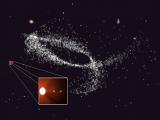
|
04/06/2014
Ancient worlds around a "foreign" star Two planets have been discovered around Kapteyn´s, a star that was possibly part of a satellite galaxy absorbed by the Milky Way |
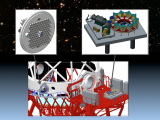
|
21/05/2014
The contract for the construction of MEGARA, the next optical instrument for the Gran Telescopio Canarias, is signed MEGARA is the first spectrograph capable of observing the emission of the gas located in between distant galaxies |
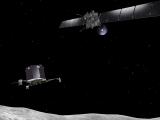
|
15/05/2014
Rosetta's target comet is becoming active The scientific imaging system OSIRIS on board ESA’s Rosetta spacecraft witnesses the awakening of the mission’s target comet |
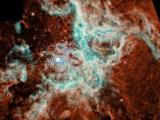
|
15/04/2014
The laws that determine how dust affects the light that reaches us from the stars are being rewritten Laws used since 1989 to correct this effect prompted errors in the characterization of stars and needed revision |
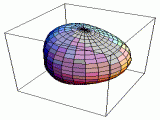
|
01/04/2014
Star-quakes reveal content of stars which are hotter and more massive than the sun The propagation of sound waves inside stars produces oscillations on their surface. The analysis of these oscillations makes it possible to know the internal structure and age of stars, and it has just turned out to be also effective in the detailed study of stars more massive than the sun |
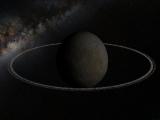
|
26/03/2014
A system of rings around a body of the Solar System which is not a planet has been spotted for the first time Chariklo, an object 250 kilometers in diameter has two rings around it possibly composed of water ice. The finding, involving researchers from the Institute of Astrophysics of Andalusia (IAA-CSIC), was made possible by a stellar occultation |
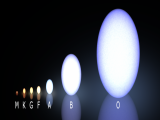
|
06/03/2014
GOSSS survey clears the way for study of massive stars The GOSSS survey was designed to fill the gaps and overcome the heterogeneity of previous surveys which led to systematic errors in the classification of stars |
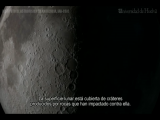
|
24/02/2014
The greatest impact of a rock against the moon has been observed The impact was observed by researchers from the University of Huelva and the Institute of Astrophysics of Andalusia (IAA-CSIC) and produced a glow brighter than the North Star |
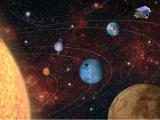
|
20/02/2014
Searching for New Worlds with PLATO Space eye with 34 telescopes will investigate one million stars Spain participaes actively in the mission |
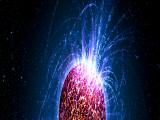
|
11/02/2014
Stars carry "memories" from their early life into in their final stages [UPDATE] It has been discovered that characteristics present at the start of a star’s life disappear during their adult life and re-emerge during their neutron star or white dwarf phases |
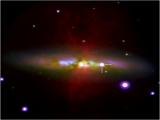
|
30/01/2014
A type Ia supernova, the closest to Earth since 1604, has been observed SN 2014J, discovered in galaxy M82, has mobilized experts from around the world. Pictures of the supernova were taken at the Estallidos Project site, coordinated by IAA, using the William Herschel telescope |
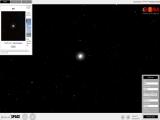
|
22/01/2014
The GLORIA Project launches ‘Personal Space’ - A free web-based tool to explore the Cosmos from your laptop The ‘Personal Space’ web application allows you to make a direct and personal connection to the universe by linking significant events in your own life with what was above you in the sky at that moment |
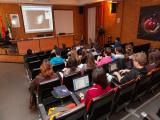
|
07/01/2014
The Institute of Astrophysics of Andalusia (IAA-CSIC) will participate in the fourth year of the Project to Introduce Research and Innovation into Secondary Schools in Granada (PIIISA 2014) The fourth year of this initiative, launched by IAA-CSIC and aimed at introducing secondary school students to the scientific method, begins tomorrow |

|
18/11/2013
Black hole in centre of Milky Way serves as experimental laboratory Experts from around the world are meeting this week at the Institute of Astrophysics of Andalusia (IAA-CSIC) to discuss the progress made on the study of the centre of our galaxy |
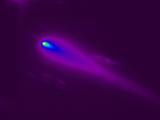
|
14/11/2013
ISON comet undergoes activity burst and it is visible with naked eye ISON will brush past the sun on 28 November next and will provide an outstanding opportunity to study the evolution of a new comet, recently arrived from the boundaries of the solar system |

|
13/11/2013
Ten billion years of cosmic evolution within arm’s reach Developed at the Calar Alto Observatory, ALHAMBRA has identified, classified and calculated the distance of more than half a million galaxies distributed in eight different celestial regions |
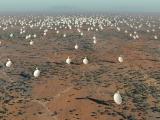
|
04/11/2013
Ten research centres and eleven Spanish companies will take part in the design of SKA, the biggest radio telescope in the world Spanish researchers and engineers will participate in the design of antennas, data transmission, and telescope management and monitoring software |
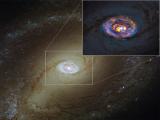
|
24/10/2013
Does the diet of a supermassive black hole affect the host galaxy? Using the ALMA telescope, it has been possible to observe NGC 1433 in detail, which presents a complex system of rings, bars and spirals that guide gas toward the central supermassive black hole |
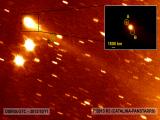
|
17/10/2013
Fragmentation of main-belt comet observed for the first time P/2013 R3 (CATALINA/PANSTARRS) is classified as a "main-belt comet”, an unusual type of asteroid that exhibits similar traits to those of comets |
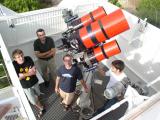
|
09/10/2013
Telescopes that do everything Robotic telescopes study everything -from objects in our Solar System and galactic nuclei to transitory phenomena such as explosions of gamma rays- without human intervention |
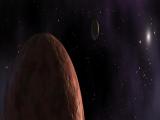
|
26/09/2013
The Researcher´s Night at the IAA The Resercher's Night at the IAA: an opportunity to know the cosmos guided by scientists |
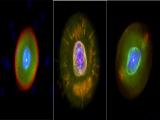
|
12/07/2013
Is the central star of the Eskimo Nebula a binary system? A study has revealed anomalies in the Eskimo Nebula that suggest that its central star could be double This study provides robust evidence on the existence of a conduction layer which transfers thermal energy produced in the collision of stellar winds in planetary nebulae |
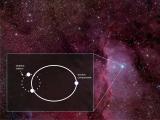
|
04/07/2013
Direct detection of the tertiary component in the stellar system HD 150136: a step forward in the study of extreme-mass stars Massive stars have, despite their scarcity, a huge influence on the structure and chemical evolution of galaxies |
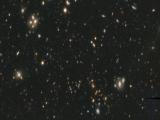
|
24/06/2013
First data release of the ALHAMBRA sample, the final catalog for the study of the cosmic evolution ALHAMBRA studies in detail eight deep regions of the sky, which make it the best available tool to know the recent history of the universe |
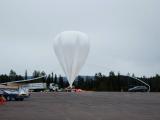
|
12/06/2013
SUNRISE, the balloon-borne solar telescope, flyes over the Arctic again SUNRISE, a balloon-borne solar telescope to study the sun's magnetic field, has been launched today from the Esrange Space Center, near the town of Kiruna (Sweden) |
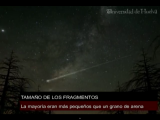
|
07/06/2013
Draconids 2011: a ton of fragments from a comet struck the earth at 83,000 miles per hour In October 2011, the Earth crossed the trail of gas and dust from the comet 21P/Giacobini-Zinner, triggering the intense rain of shooting stars known as Draconids |
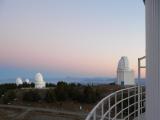
|
05/06/2013
Disagreement of the staff of the Institute of Astrophysics of Andalusia with the drastic cut to the Calar Alto Observatory (CAHA) The staff of the Institute of Astrophysics of Andalusia (IAA-CSIC) disagrees with the recent addendum to the agreement between CSIC and MPG which reduces the budget, stops funding two of the telescopes and involves the dismissal of staff |
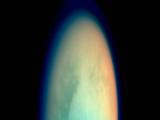
|
05/06/2013
Identified the molecules that form Titan´s haze, responsible for the stability of the atmosphere Astronomers from the IAA have analyzed an emission detected few months ago in Titan's atmosphere and reveal the existence of large amounts of polycyclic aromatic hydrocarbons. These compounds, generated in the upper atmosphere, descend to lower levels and form the haze that covers the satellite, heats the atmosphere and prevents condensation |

|
04/04/2013
Young "suns" shine in X-rays in the Small Magellanic Cloud Chandra observations of the SMC have resulted in the first detection of X-ray emission from young stars with masses similar to our Sun outside our Milky Way galaxy |
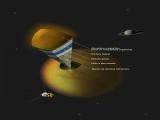
|
18/03/2013
Misterious gas in Titan´s atmosphere Titan, Saturn´s biggest moon, is the only satellite in the Solar System with a dense atmosphere and the only object other than Earth with confirmed surface liquid material. The analysis of the data obtained by Cassini-VIMS instrument reveals the existence of an unidentified gas in the atmosphere |

|
21/02/2013
CARMENES, the instrument will search for planets like ours, reaches the construction phase A committee of experts meeting in Granada has approved the final design of the instrument, which marks the beginning of the construction phase |
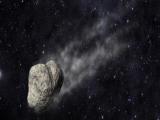
|
20/02/2013
The cause of dust ejection from Main-Belt Comet P/2012 F5 (Gibbs) Asteroids, unlike comets, do not present a tail, but some exceptions are known. Spanish astronomers observed one of these uncommon asteroids withe the Gran Telescopio Canarias and found that a short duration event ocurred around the 1st of July of 2012 might have created the tail |
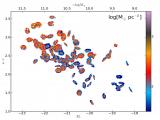
|
31/01/2013
CALIFA unveils the evolution of galaxies in space and time The spatially resolved history of star formation is obtained for a sample of one hundred galaxies. Researchers find that massive galaxies grow their stellar mass from inside-out and faster than the less massive ones |
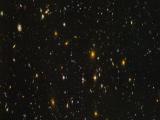
|
11/12/2012
The chemical evolution of the Universe over the past ten billion years A research, led by the IAA, analyzes twenty thousand galaxies from the zCOSMOS survey. The most distant galaxies have less proportion of metals than those in the local universe, which confirms the hierarchical model of galaxy formation |
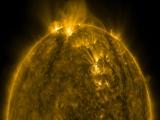
|
28/11/2012
The planets may exert an influence on the magnetic activity of the Sun The planets could interfere with the mechanisms responsible for generating the solar magnetic field in a key layer of the interior of the star. It would explain other periodicities detected in the solar magnetic activity |
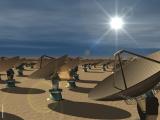
|
22/11/2012
Spanish science and industry meet in the Square Kilometre Array, the largest scientific infraestructure ever developed The Square Kilometre Array (SKA) is a radio telescope made of thousands of antennas distributed over a distance of at least 3000 km. A meeting will analyze the opportunities for Spanish industry in this ambitious project |
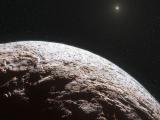
|
21/11/2012
A stellar occultation reveals the properties of Makemake The occultation allowed determining the size, shape and albedo of Makemake, and showed that it has no global Pluto-like atmosphere |
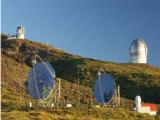
|
15/11/2012
Gamma-ray twins strike back MAGIC telescopes re-start observations of the gamma-ray sky after a full upgrade |
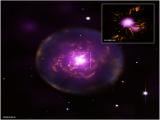
|
15/11/2012
Rebirth of X-ray emission from the born-again planetary nebula A30 About 850 years ago, Abell 30 experienced a very late thermal pulse that created a small-scale planetary nebula inside the original one |
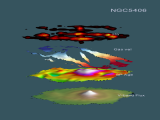
|
31/10/2012
CALIFA: The local extragalactic universe unveiled The Calar Alto Legacy Integral Field Area survey (CALIFA survey) announces today its first public release of data, offering an unprecedentedly detailed view of one hundred galaxies in the local universe with ample opportunities for scientific study. Together with the data release, two technical publications authored by members of the CALIFA collaboration have been made publicly available, describing the data and showing some of their... |

|
16/10/2012
The first systematic survey of planetary nebula in the solar neighborhood The physical mechanisms responsible for the PN morphological menagerie are still subject of hot debate |
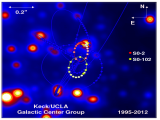
|
05/10/2012
The shortest known period star orbiting our Galaxy´s supermassive black hole SO-102 revolves around the Milky Way´s supermassive black hole in 11,5 years. The star may help test the laws of gravity under extreme conditions and understand the role supermassive black holes play in the center of galaxies |
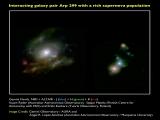
|
25/09/2012
Optical surveys miss between 20% and 80% of core-collapse supernova The fraction of core-collapse supernovae that remain undetected due to obscuration by dust reaches one in five for nearby galaxies and four in five for distant galaxies. The number of detected supernovae helps determine the cosmic star formation history |
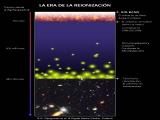
|
20/09/2012
A galaxy formed 200 million years after the Big Bang MACS1149-JD, a very faint galaxy, will provide clues about the reionization |
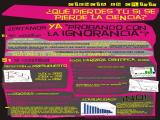
|
12/09/2012
Science floods the streets of Granada The Institute of Astrophysics of Andalusia(IAA-CSIC) coordinates different activities in defense of investment in science: concentrations, a flash mob and outreach on the street to raise awareness of the importance of research. |
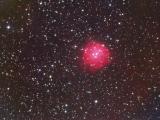
|
16/07/2012
A massive star with the most intense magnetic field yet seen The star's magnetic field, 20.000 times stronger than the Sun's, is slowing the star's rotation |
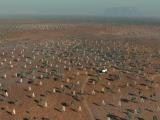
|
28/06/2012
A green look to the sky The Spanish astronomy, technological centers and companies come together in the international project SKA, a network of radioastronomy sensors on a continental scale |

|
12/06/2012
Gaia-ESO: a revolution in our understanding of the Milky Way and stellar evolution Gaia-ESO, one of the largest and most ambitious ground-based surveys, will study 100.000 stars in our Galaxy |

|
04/06/2012
The most comprehensive global study on the ice The IAA has been involved in the most comprehensive study to date on the ice. The work, which involved 17 scientists from 11 countries collected what are the current issues that exist in this field of research |